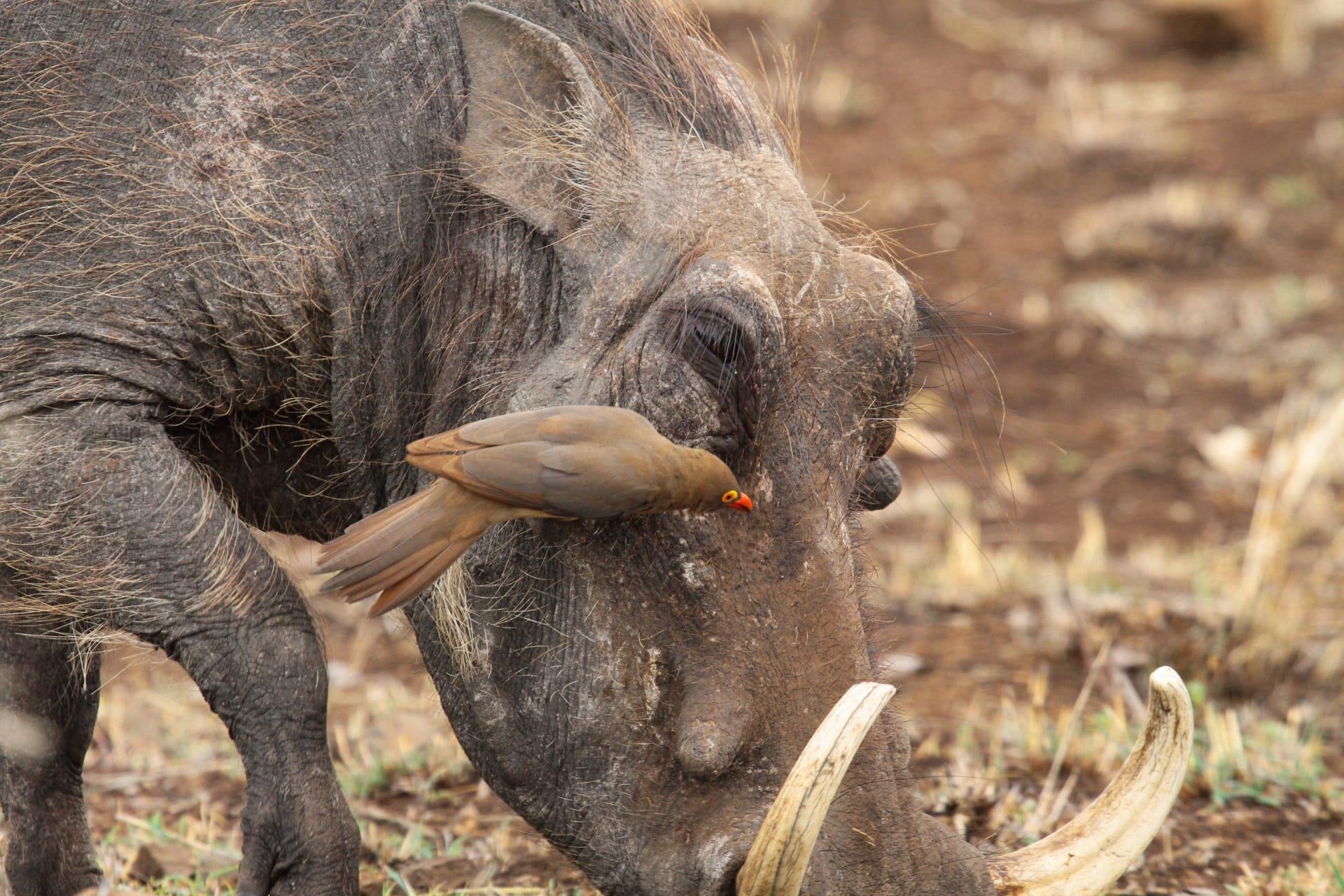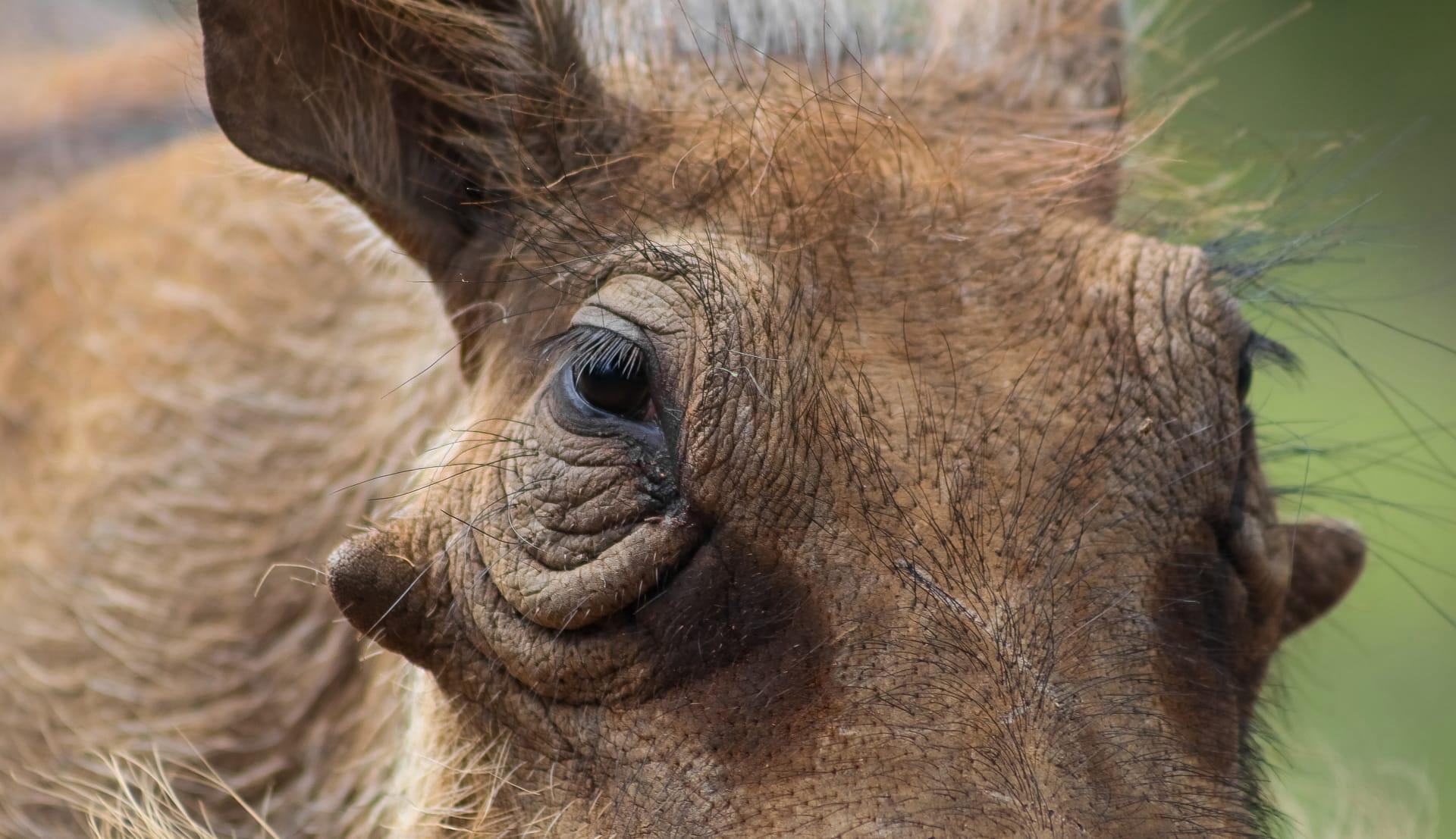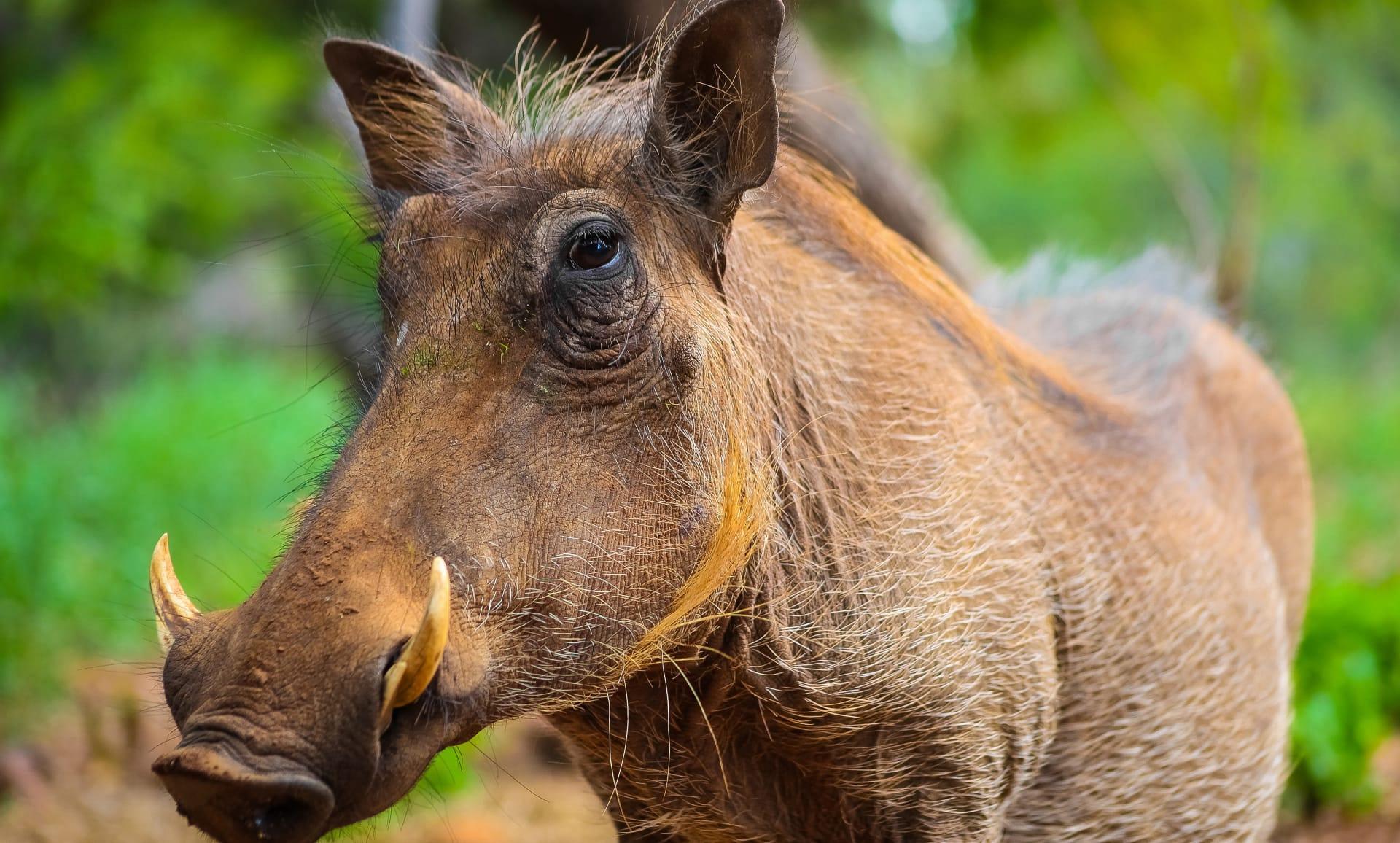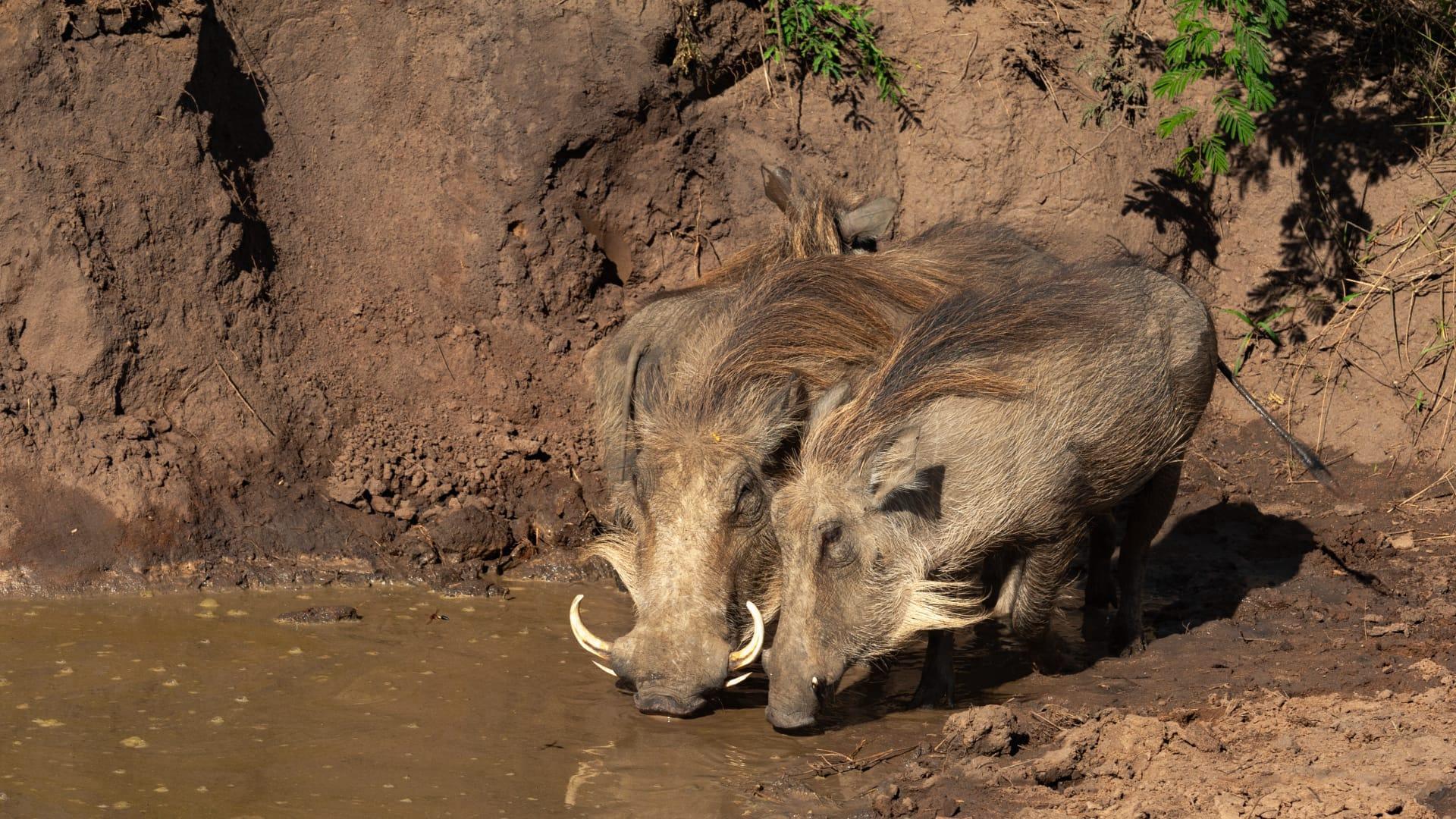Warthog Trivia
- Home /
- Trivia Question /
- Animal /
- Warthog Trivia
1
Question: How big can warthogs get?
Answer: Warthogs are surprisingly large creatures. Males, known as boars, can reach lengths of 4 to 4.5 feet (1.2 to 1.4 meters) and weigh between 130 to 330 pounds (60 to 150 kilograms). Females, or sows, are slightly smaller, typically weighing around 110 to 165 pounds (50 to 75 kilograms). Their size can be quite imposing when you consider their large heads and formidable tusks.
Question: What is unique about warthog tusks?
Answer: Warthog tusks are not only impressive but also quite practical. These elongated teeth can grow up to 10 inches (25 centimeters) long. They serve as powerful weapons against predators and are used in battles with other warthogs. Interestingly, the upper and lower tusks work together like scissors, sharpening each other as the warthog opens and closes its mouth.

2
Question: Do warthogs really kneel to eat?
Answer: Yes, it's true! Warthogs have a unique feeding behavior where they bend their front legs and kneel on their padded wrists. This unusual posture allows them to get closer to the ground to graze on grasses and dig up roots and bulbs. It's a quirky but effective adaptation for feeding.
Question: Are warthogs aggressive animals?
Answer: Contrary to popular belief, warthogs are not inherently aggressive. While they can fiercely defend themselves with their tusks when threatened, they are generally passive and prefer to flee from danger. They're known to be quite social within their own groups and can often be seen living in harmony with other species.

3
Question: How fast can a warthog run?
Answer: Warthogs might look bulky, but they are surprisingly fast runners. They can sprint at speeds of up to 30 miles per hour (48 kilometers per hour) when escaping predators. This speed is crucial for survival in the wild, where quick reflexes often mean the difference between life and death.
Question: Do warthogs really use burrows?
Answer: Yes, warthogs are known for taking over abandoned burrows made by other animals, such as aardvarks. They use these burrows for protection against predators and extreme weather. A unique aspect of their behavior is entering the burrow backwards, ensuring they can face any potential threat directly and emerge quickly if necessary.

4
Question: What is the lifespan of a warthog in the wild?
Answer: Warthogs typically live for about 12 to 18 years in the wild. However, their lifespan can be affected by factors like predation, habitat, and availability of food. In protected areas or captivity, they might live slightly longer due to reduced threats and consistent food supply.
Question: How do warthogs communicate with each other?
Answer: Warthogs use a variety of sounds to communicate. They grunt, snort, squeal, and make a loud grunting sound to signal alarm or distress. These vocalizations play a crucial role in maintaining social bonds within the group and alerting each other to potential dangers.

5
Question: Are warthogs good at swimming?
Answer: While not typically known for their swimming abilities, warthogs can swim if needed. They are not avid swimmers like some other animals, but they won't hesitate to cross small rivers or streams when migrating or escaping predators.
Question: Do warthogs have any natural predators?
Answer: Warthogs do face several natural predators, including lions, leopards, cheetahs, crocodiles, and hyenas. Their young are particularly vulnerable. Warthogs use their speed and tusks for defense, but often their best strategy is escaping to their burrows, where predators can't easily follow.